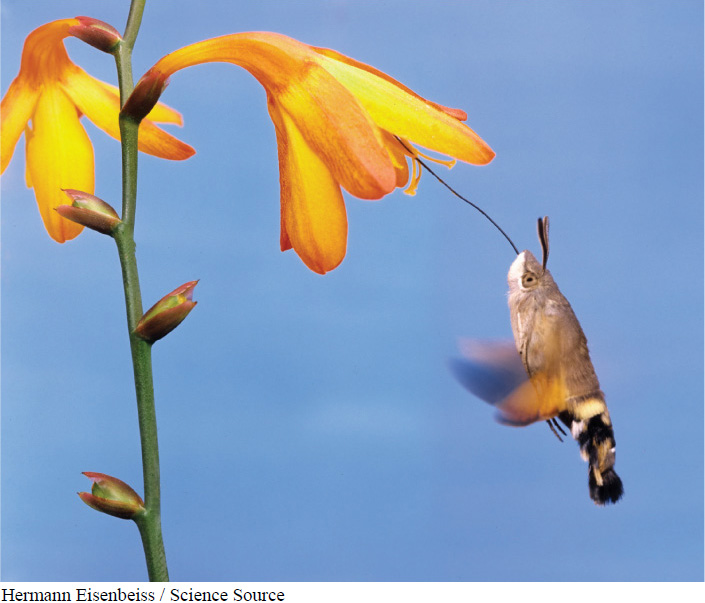15.10: Interacting species evolve together.
There is a moth in Madagascar with a tongue that is 11 inches long! This might seem absurd—until the moth approaches a similarly odd-looking orchid. The orchid’s flower has a very long tube, also about 11 inches long, with a bit of nectar at the very bottom. The moth’s tongue, although usually rolled up, straightens out as fluid is pumped into it, and the moth can then insert it into the long nectar tube. As its tongue reaches the bottom, the moth slurps up the nectar. The moth also gets a bit of pollen stuck to it, which gets brushed onto the reproductive parts of the next orchid flower it visits (FIGURE 15-21).

Figure 15.21: A perfect match? Long-tubed orchids and long-tongued moths in Madagascar each influence the evolution of the other.
It’s clear that having an 11-inch tongue is useful, even necessary, to extract nectar from an 11-inch nectar tube. And it’s clear that putting nectar at the bottom of an 11-inch tube is a strategy to restrict access to only those pollinators that will reliably pass pollen from plant to plant of the same species. But how did such a system originate? Each trait seems to make sense only if the other already exists. The answer is that the two traits evolved—coevolved—together.
Q
Question
15.8
Which came first, the long-tongued moths or the long-tubed flowers?
As a consequence of natural selection, populations of organisms commonly become better adapted to their environment. As long as there is variation for a trait and the trait is heritable, differential reproductive success will lead to a change in the population. It is easy to imagine populations becoming more and more efficient at making use of non-living resources. But natural selection does not distinguish between biotic and abiotic resources as selective forces. Either can cause individuals with certain traits to reproduce at a higher rate than others, so either can cause evolution: small changes in the moth lead to small changes in the orchid, which select for further small changes in the moth … and the process continues. In the end, species become adapted not just to their physical environment but to the other species around them.
TAKE-HOME MESSAGE 15.10
In producing organisms better adapted to their environment, natural selection does not distinguish between biotic and abiotic resources as selective forces.
What is coevolution?
